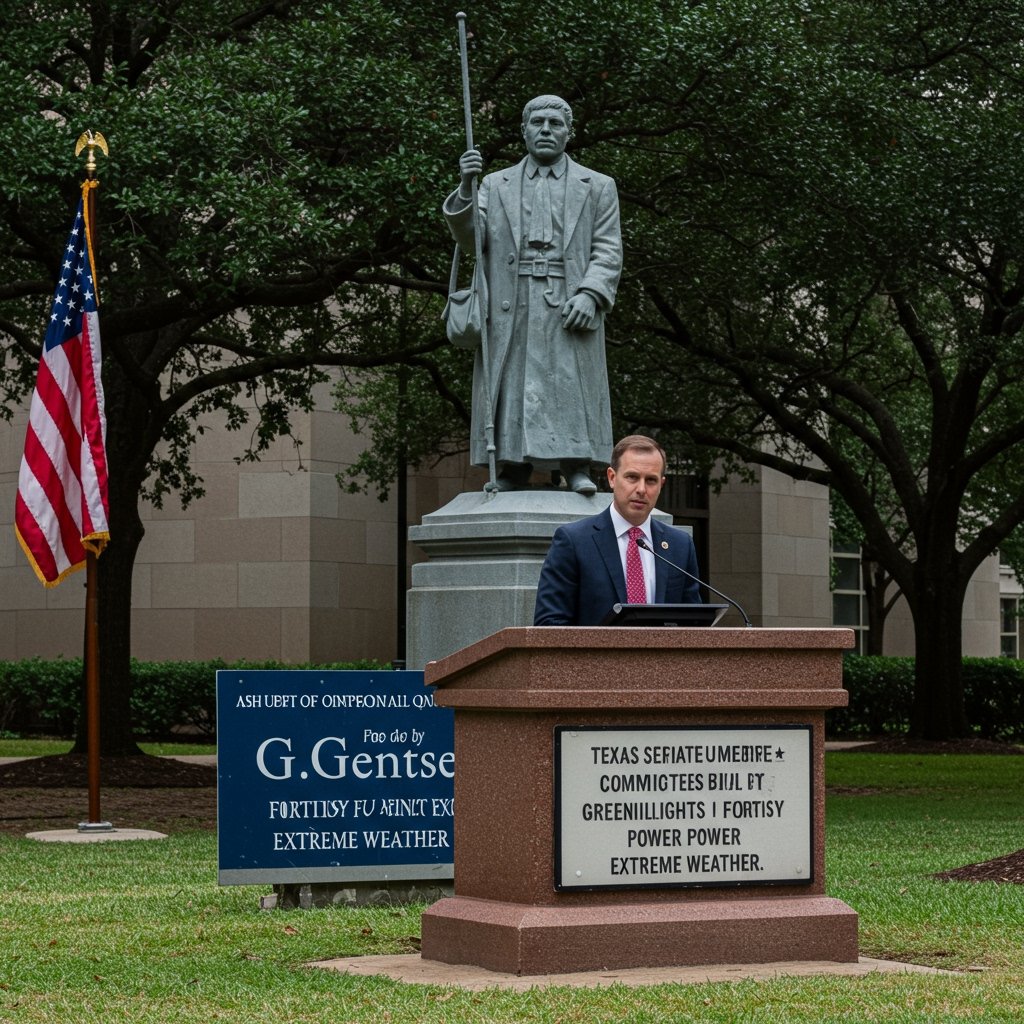Texas Senate Committee Advances Major Grid Reliability Legislation
A pivotal piece of legislation aimed at significantly enhancing the reliability of the Texas power grid has taken a crucial step forward. On Tuesday, the Texas Senate Business & Commerce Committee voted to advance Senate Bill 7 (SB 7), a comprehensive measure designed to address vulnerabilities exposed in recent weather events and bolster the state’s energy infrastructure.
The bill, authored by Senator Bryan Hughes, represents a legislative response to persistent concerns surrounding the grid’s resilience, particularly during periods of extreme cold. Its advancement through the committee signals a legislative push to implement stricter standards and requirements for key players in the Texas energy ecosystem.
Addressing Lessons from Recent Cold Snaps
The impetus behind SB 7 is directly linked to recent analyses highlighting potential weaknesses in the Electric Reliability Council of Texas (ERCOT) grid. A specific analysis following a moderate February cold snap underscored how even less severe weather events can strain the system and reveal areas needing improvement.
Unlike the catastrophic Winter Storm Uri in 2021, the February event was less severe but still prompted scrutiny. The ERCOT analysis, referenced in discussions surrounding SB 7, served as a reminder that ongoing vigilance and investment in grid resilience are necessary to prevent disruptions that can impact millions of Texans.
Senator Hughes’s bill seeks to build upon previous legislative efforts by introducing more stringent, prescriptive mandates for energy providers and infrastructure operators.
Key Provisions of Senate Bill 7
SB 7 encompasses several critical components intended to create a more robust and reliable power system:
Enhanced Weatherization Requirements: A cornerstone of the bill is the mandate for stricter winterization standards. This applies not only to power generation plants but also, significantly, to crucial natural gas infrastructure. The interconnectedness of the gas and electric sectors was a major factor in past grid failures, as frozen wells, pipelines, and processing facilities limited fuel supply to power plants.
Under SB 7, facilities identified as critical to grid operations, including natural gas supply chain components and power generation assets, would be required to implement weatherization measures deemed necessary to operate reliably in cold conditions. This moves beyond previous requirements by potentially imposing more rigorous and enforceable standards based on lessons learned.
Mandatory Reserve Capacity Margins: Another key provision mandates that ERCOT maintain increased reserve capacity margins. Reserve capacity refers to the amount of available power generation capacity that is not actively being used but can be brought online quickly to meet unexpected demand surges or compensate for generation outages. Increasing these margins provides a buffer against unforeseen events and reduces the likelihood of scarcity conditions that can lead to price spikes or rolling blackouts.
The bill would legally require ERCOT to target and maintain a higher minimum level of reserve power than is currently required or has historically been held. This is intended to ensure there is always sufficient capacity available, even during peak demand or adverse conditions.
Potential Costs and Implementation Challenges
While the goals of SB 7 are widely supported, the implementation of its mandates, particularly the increased reserve capacity requirement, is projected to add significant operational costs to utility providers. Maintaining higher reserve margins means utilities and power generators must keep more capacity available and potentially invest in additional resources, even if they are not dispatched to the grid under normal circumstances.
These added costs could ultimately be passed on to consumers through higher electricity rates. The balance between ensuring reliability and managing affordability is a central tension in the ongoing debate over grid reform.
Expert Testimony and Calls for Refinement
During the Senate Business & Commerce Committee hearing, testimony was heard from various stakeholders, including regulatory bodies and industry representatives. Public Utility Commission (PUC) Chair Kathleen Hicks testified on the bill, offering insights from the state’s primary utility regulator.
Chair Hicks expressed support for the overall objectives of SB 7, acknowledging the need for enhanced grid reliability measures. However, she also sought amendments to the bill, specifically raising concerns regarding proposed implementation deadlines.
Hicks highlighted the complexity of implementing such sweeping changes and suggested that the deadlines outlined in the initial draft might be overly ambitious, potentially creating undue challenges for compliance. She advocated for timelines that are realistic and allow for proper planning and execution by regulated entities.
Furthermore, Chair Hicks sought amendments related to the potential impact of the bill’s provisions, particularly the reserve margin mandate, on consumer rates. While supporting the reliability goals, the PUC is also tasked with ensuring just and reasonable rates for Texans. Hicks’s testimony reflected a desire to ensure that the bill’s requirements are implemented in a manner that minimizes upward pressure on electricity bills where possible, or at least clearly accounts for the cost implications.
Next Steps in the Legislative Process
The advancement of SB 7 through the Senate Business & Commerce Committee marks a significant step, allowing the bill to proceed to the full Senate for consideration. The legislative process involves further debate, potential amendments, and eventual votes in both the Senate and the House of Representatives before it could be sent to the Governor’s desk to be signed into law. The discussions initiated during the committee hearing, particularly regarding implementation timelines and cost impacts raised by Chair Hicks and others, are likely to continue as the bill moves forward, shaping its final form.






